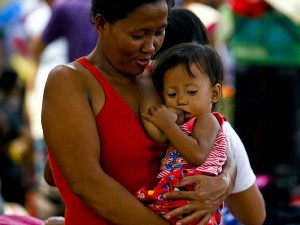
UNITED NATIONS – Better care has cut the number of women dying in pregnancy and childbirth by nearly half in the past two decades, but there is still a death every two minutes, according to UN figures released Wednesday.
India and Nigeria between them accounted for one third of the 287,000 deaths of pregnant women in 2010 and Africa accounts for 36 of the 40 countries with the highest maternal deaths.
But health experts hailed the 47% fall in fatalities from 543,000 in 1990, and said the strategy for saving more lives was clear.
“We know exactly what to do to prevent maternal deaths: improve access to voluntary family planning, invest in health workers with midwifery skills, and ensure access to emergency obstetric care when complications arise,” said Babatunde Osotimehin, executive director of the UN Population Fund (UNFPA).
“These interventions have proven to save lives,” he added at the launch of the “Trends in Maternal Mortality” report by the UNFPA, World Health Organization, UN Children’s Fund and the World Bank.
Countries in Eastern Asia have made most progress on improving the health of expectant and new mothers, said the report.
Many countries, particularly in sub-Saharan Africa, will fail to reach the Millennium Development Goal of reducing maternal death by 75% from 1990 to 2015.
“Every two minutes, a woman dies of pregnancy-related complications,” said the report.
The four most common causes are: severe bleeding after childbirth, infections, high blood pressure during pregnancy, and unsafe abortion.
Almost 20% of deaths (56,000) were in India and 14% (40,000) in Nigeria in 2010.
Another eight countries – Democratic Republic of the Congo (15,000), Pakistan (12,000), Sudan (10,000), Indonesia (9,600), Ethiopia (9,000), Tanzania (8,500), Bangladesh (7,200) and Afghanistan (6,400) – account for the next 40%.
“More than 215 million women lack access to modern contraceptives,” said Osotimehin, a former health minister in Nigeria.
“Meeting the need for voluntary family planning for these women would not only fulfill a human right, it would also reduce the number of maternal deaths by a third. This is a highly cost-effective public health strategy,” he added.
In 2010, the global maternal mortality ratio was 210 maternal deaths per 100,000 live births. Sub-Saharan Africa had the highest maternal mortality ratio at 500 maternal deaths per 100,000 live births, said the report.
In sub-Saharan Africa, a woman faces a 1 in 39 lifetime risk of dying during pregnancy or childbirth. In South-eastern Asia the risk is 1 in 290 and in developed countries, it is 1 in 3,800.

